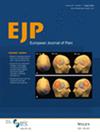Representation of Pain and Injury in Children's Picture Books—A Content Analysis
Abstract
Background
Pain and injury experiences are common throughout childhood (e.g., minor injuries, vaccine injections) and provide important and frequent opportunities for children to learn about pain. Sociocultural contexts, such as reading picture books, may also provide critical opportunities for children to learn about pain/injury. This study aimed to investigate the representation of pain and injury in children's literature.
Methods
We systematically screened for pain/injury representations in children's picture books, freely available from public libraries in South Australia. A content analysis of pain/injury representations was conducted on all included books.
Results
Two hundred and fifty-four picture books were screened until 50 books with pain/injury representations were identified. There were 63 pain (i.e., subjective experience) and 43 injury (i.e., associated with tissue damage) representations. ‘Minor’ pains/injuries were frequently represented (n = 69; 86%), whereas ‘procedural’ (e.g., vaccine injections) (n = 1; 1%) and ‘chronic’ pain (n = 2; 3%) were not. Gender differences were observed where boy characters experienced more pain/injury incidents (n = 42; 53%) than girl characters (n = 23; 28.8%). Behavioural responses to pain/injury also differed, with girl characters being portrayed to experience more emotional responses (e.g., crying; n = 7; 77.8%) than boy characters (n = 2; 22.2%). Other characters present during pain/injury experiences were more likely to be passive bystanders (i.e., did not respond; n = 109; 59.6%) than active responders (n = 51; 27.6%) to characters experiencing pain.
Conclusions
While the type of pain/injury representations in picture books seem consistent with young children's everyday pain/injury experiences (i.e., ‘minor’ pains/injuries), gendered stereotypes and dominant societal perspectives around pain and injury appear to be reinforced.
Significance Statement
Shared reading of children's picture books provides an important sociocultural context for children to learn about pain and injury. In this study, we investigated how pain and injury are represented in children's picture books. We found that pain/injury incidents were consistent with young children's common pain/injury experiences; however, observing characters often lacked prosocial behaviours (e.g., helping, providing comfort) and gendered stereotypes were common. These findings have similarities to pain representations in children's popular TV/movies, speaking to the pervasiveness of these messages across children's media.


 求助内容:
求助内容: 应助结果提醒方式:
应助结果提醒方式:


